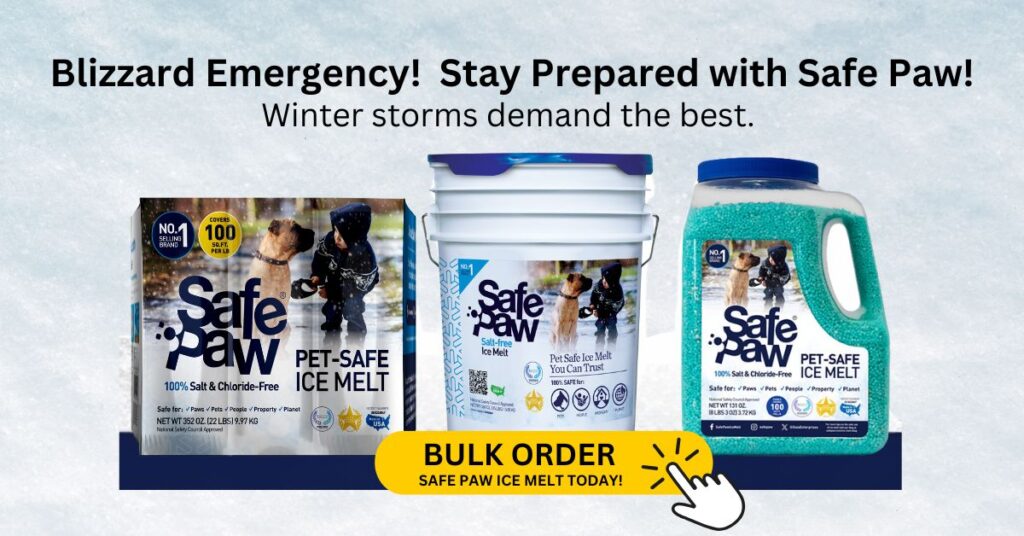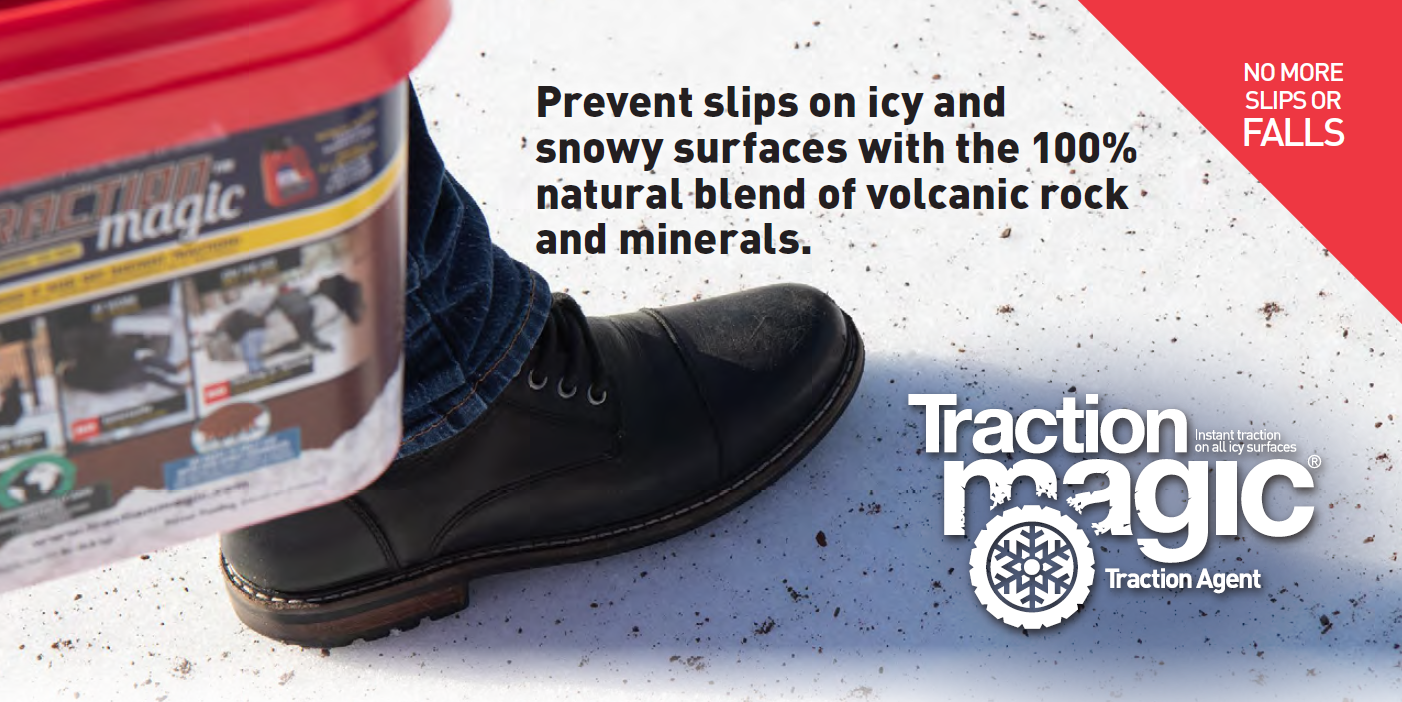How Winter And Snow Impacts Dog’s Paws
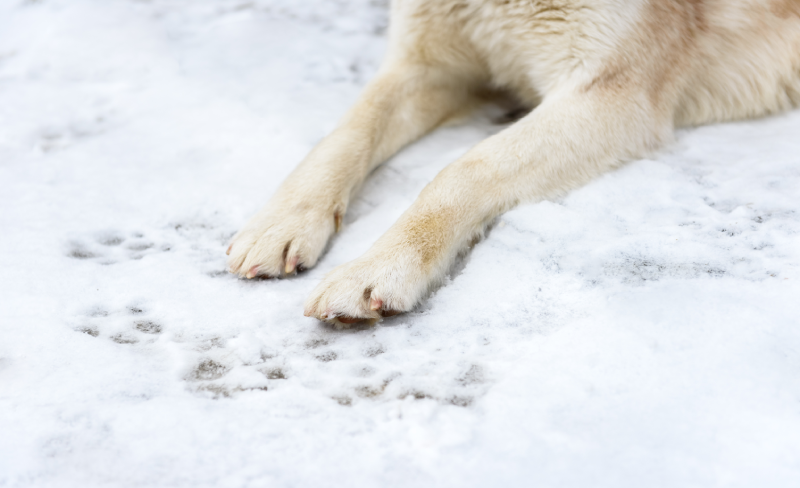
Even though your dog’s paw is divinely designed with a built-in heat exchange system that can withstand the cold for extended periods and salt on new concrete, there are risks and precautions to be aware of. You may not know how the cold can affect your dog if you are from a warmer climate and have become accustomed to the lazy days of summer heat. You should also remember that your dog’s coat has not adapted to temperatures outside of its normal range, especially if they are an indoor dog.
Spending too much time outside in the cold can harm a dog’s paws, so it’s important to know what to look for when walking or playing in the cold. This quick guide deconstructs those elements and explains how they can harm your four-legged companions.
Pet Safe Ice Melt
Snow
While fluffy white snow is usually harmless, extra cold temperatures can cause a dog’s paw pads to burn or dry out. Limit exposure during freezing weather, use safe pet ice melter, and inspect paw pads for cracking.
Ice
Ice can cause problems for dogs with sensitive or injured pads, in addition to creating potentially dangerous conditions for those who enjoy a brisk walk in the snow. When the temperature drops during a walk, any moisture in the fur between the pads freezes, making it a bigger problem.
Get ready for winter with the ONLY Pet Safe Ice Melt you can trust
Impacts
1-Frostbite
It occurs when the blood vessels in the skin constrict due to exposure to extreme cold or prolonged cold. It’s important to note that dogs with heart disease, diabetes, or poor blood flow are more susceptible to frostbite. Never leave your dog outside in the winter, regardless of breed or coat thickness. Frostbite can quickly occur in sensitive areas such as their ears and paws, especially when the cold is combined with wind and moisture. Frostbite and permanent injury can happen very quickly after that.
Get ready for winter with the ONLY Pet Safe Ice Melt you can trust
2-Chafing
Moisture on the dog’s paws causes chafing during the winter. Chafing is similar to diaper rash in that it causes their toes to rub against each other, leaving the skin raw and exposed. Frostbite and infection can result from this moist, raw, and exposed skin. Be aware that if their paws are left damp, painful chafing can occur with or without dog boots. To avoid chafing, make sure your dog’s paws are completely dry before going outside, limit outdoor walks and playtime to short periods, and use a safe pet ice melter.
Can Dogs Eat Salt? The Dangerous Truth
The short answer to “Can dogs eat salt?” is no, or at least not in the amounts they may come across during winter. Yes, small amounts of salt are necessary for maintaining bodily functions, but the salt used in deicing products is far too concentrated to be considered safe. A dog can accidentally ingest salt by licking their paws after walking on a salted driveway, and this can lead to some serious health consequences. So, while salt is harmless in trace amounts, road salt is definitely not.
Symptoms of Salt Toxicity in Dogs
The most critical thing is to recognize the symptoms of salt toxicity in dogs before it’s too late. Imagine this: Your dog just came back inside after playing in the snow, and suddenly, they start drinking an excessive amount of water. They seem restless, and soon enough, vomiting starts. This could be the beginning signs of salt toxicity. Other symptoms can include diarrhea, lethargy, lack of coordination, and in severe cases, seizures.
It’s scary, isn’t it? Just because of a quick walk across a treated sidewalk, your furry friend could end up feeling seriously ill. The problem is that many pet owners aren’t aware of how quickly salt exposure can turn into an emergency. Some believe that all ice melt products are equally safe, but they’re not. Safe Paw understands this risk and offers a safer alternative.
Safe Salt Levels: Keeping Pets Safe
So, what are the safe salt levels for dogs? Ideally, you want to minimize their exposure to deicing salts altogether. The safest level is essentially none when it comes to the heavily concentrated salts used in ice melt products. This is where Safe Paw shines. Unlike other deicing products, Safe Paw is completely salt-free and non-toxic. You can apply it to your driveway without worrying about your pet ingesting something harmful. It doesn’t burn their paws or pose any risk if licked. Plus, it’s safe for your kids too, which is a big bonus for any family.
Why Switch to Safe Paw?
You might think using traditional salt is a minor compromise for a safer driveway, but the risks to your pet far outweigh any benefit. Why would you take that chance when there’s a pet-safe ice melt alternative that’s just as effective? Safe Paw melts ice effectively without the toxic side effects. It’s an easy change that brings peace of mind. Not to mention, Safe Paw is also eco-friendly—so you’re not just protecting your pets but the environment too.
Gaia Enterprises Inc. delivers 100% pet-safe and environmentally friendly winter products. Safe Paw, our flagship product, is the #1 selling pet-safe ice melt that does not harm pets, safe if ingested, and safe on all types of concrete.
Tips To Protect Dog Paws in Snow
Protecting your dog’s paws in the snow is essential for their comfort and well-being. Here are some effective ways to do it:
- Use Dog Booties: Dog booties are a fantastic solution to shield your pup’s paws from the cold and abrasive snow. They come in various sizes and styles, providing both warmth and protection.
- Apply Paw Balm: Paw balms or waxes create a protective barrier on your dog’s paws, guarding against snow, ice, and salt. They also help to prevent paw pad cracking.
- Keep Walks Short: During particularly frigid days, limit the length of your walks to reduce your dog’s exposure to the cold. Short and frequent outings are often more comfortable for them.
- Use Safe Paw: Safe Paw is an excellent addition to your winter toolkit. It’s a pet-safe ice melt that won’t harm your dog’s paws if they come into contact with it. Plus, it’s gentle on your lawn and the environment.
Home Remedies for Dog Paws in Winter
If you prefer natural remedies, several home remedies can help protect your dog’s paws in winter:
- Coconut Oil: Applying coconut oil to your dog’s paws can create a protective barrier and prevent cracking.
- Petroleum Jelly: Similar to coconut oil, petroleum jelly can provide protection against the cold and keep paws moisturized.
- Dog Socks: Specially designed dog socks can help keep your pup’s paws warm and shielded from the snow.
- Homemade Paw Balm: You can make your own paw balm using ingredients like shea butter, beeswax, and olive oil. Be sure to research a suitable recipe and consult your veterinarian if you have concerns about specific ingredients.
Using Safe Paw for a Paw-Safe Winter
When it comes to keeping your dog’s paws safe in the winter, Safe Paw is an excellent solution. It’s a non-toxic, chemical-free ice melt designed with your pets in mind. You can confidently use it to melt ice on your pathways and driveways without worrying about harming your dog’s paws if they happen to step on it.
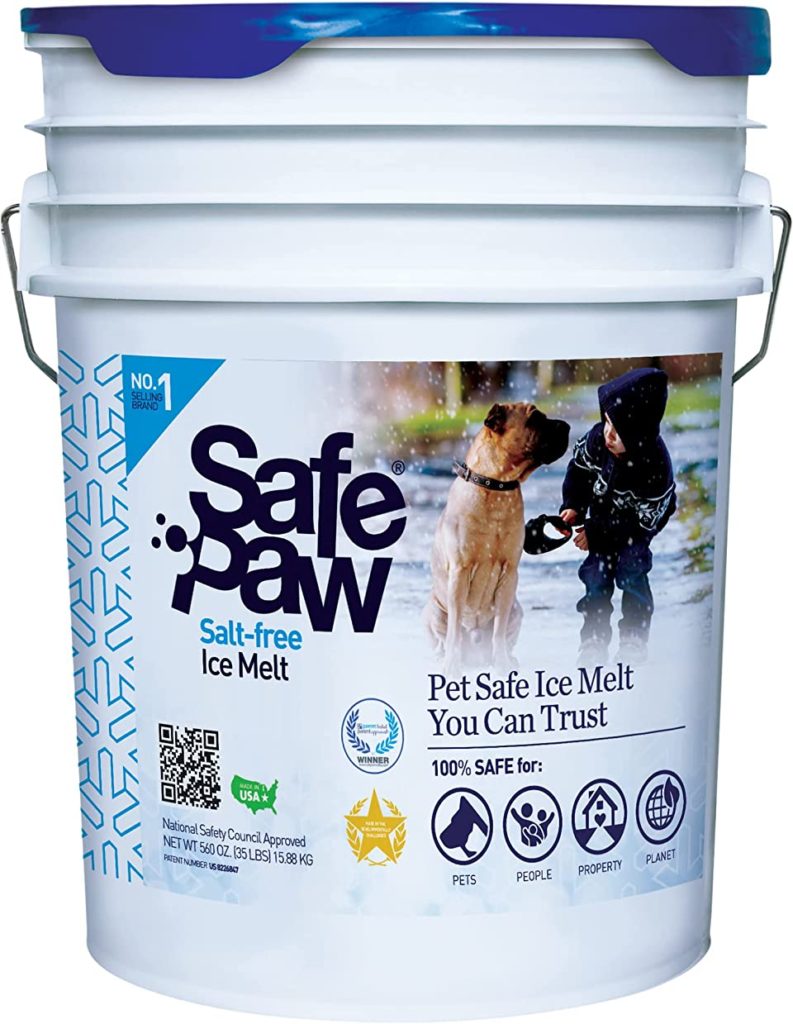
Safe Paw
The Original and the #1 Child and Pet Safe Ice Melt for over 20 years. Guaranteed environmentally safe – will not harm waterways and sensitive wetlands.
Wrapping Up
The cold isn’t the only concern; winter also brings salt on new concrete and corrosive deicers. If ingested, both liquid and rock salt pavement deicers can be highly harmful to our dog’s paws and digestive system. The natural corrosiveness of pavement rock salt or snowmelt salts causes chemical burns and irritation to unprotected paws. Safe Paw, on the other hand, is a non-toxic, pet-safe ice and snow melter that you can use without hesitation.
Furthermore, dogs tend to lick their paws and lap up while walking or playing, melting snow and ice in puddles. Ingestion of these salts-containing melted snow and ice can result in severe burns, ulceration, and toxicity.
Gaia Enterprises Inc. delivers 100% pet-safe and environmentally friendly winter products. Safe Paw, our flagship product, is the #1 selling pet-safe ice melt that does not harm pets, safe if ingested, and safe on all types of concrete.
FAQs
Other Ice Melt Products
Traction Magic
Stay safe on slippery surfaces with a product that’s 100% natural and safe for pets, people, and your property. Use Traction Magic on sidewalks, steps, or as instant traction for your car.
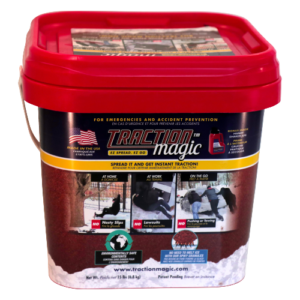
Safe Thaw
Imagine an ice melt you can put down and never worry about. It won’t harm pets, kids and your property. That’s Safe Thaw. Unlike anything else on the market, Safe Thaw can change how winter affects our planet.
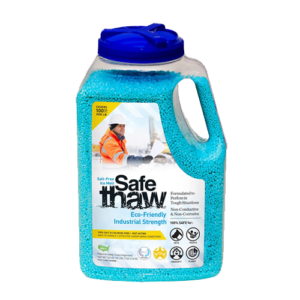
Walk On Ice
Prevent slips at home, work or on the go, The handy disposable canister can be taken everywhere, with the same 100% naturally occurring minerals that provide instant traction on ice or snow.
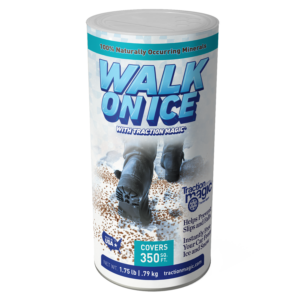
Safe Thaw
Imagine an ice melt you can put down and never worry about. It won’t harm pets, kids and your property. That’s Safe Thaw. Unlike anything else on the market, Safe Thaw can change how winter affects our planet.

